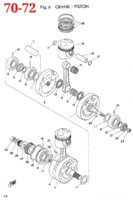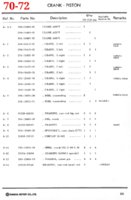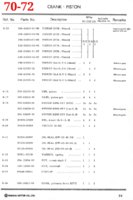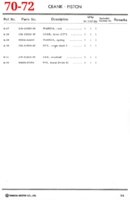Interesting! Your XS2 cylinders have NO bridge. Noted!
Now, where is the aluminum flaking coming from. Have a close look at the cases, where the flywheels spin. A separating crank would have a flywheel dragging in there, making flakes. Otherwise, I haven't a clue.
I see the offset wear pattern on your rockers, and have a theory. But, I'm running out of me. I need a shop full of flunkies to do my bidding, to pursue this theory.
This service bulletin notes that ALL valve timing be checked at 0.012" lash.
(At the bottom)
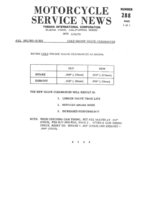
So, you can ignore the timing readings from those other clearances...
Now, where is the aluminum flaking coming from. Have a close look at the cases, where the flywheels spin. A separating crank would have a flywheel dragging in there, making flakes. Otherwise, I haven't a clue.
I see the offset wear pattern on your rockers, and have a theory. But, I'm running out of me. I need a shop full of flunkies to do my bidding, to pursue this theory.
... I checked the cam timing 3 different ways. Intake at .003", .006" and .012"...
This service bulletin notes that ALL valve timing be checked at 0.012" lash.
(At the bottom)

So, you can ignore the timing readings from those other clearances...

